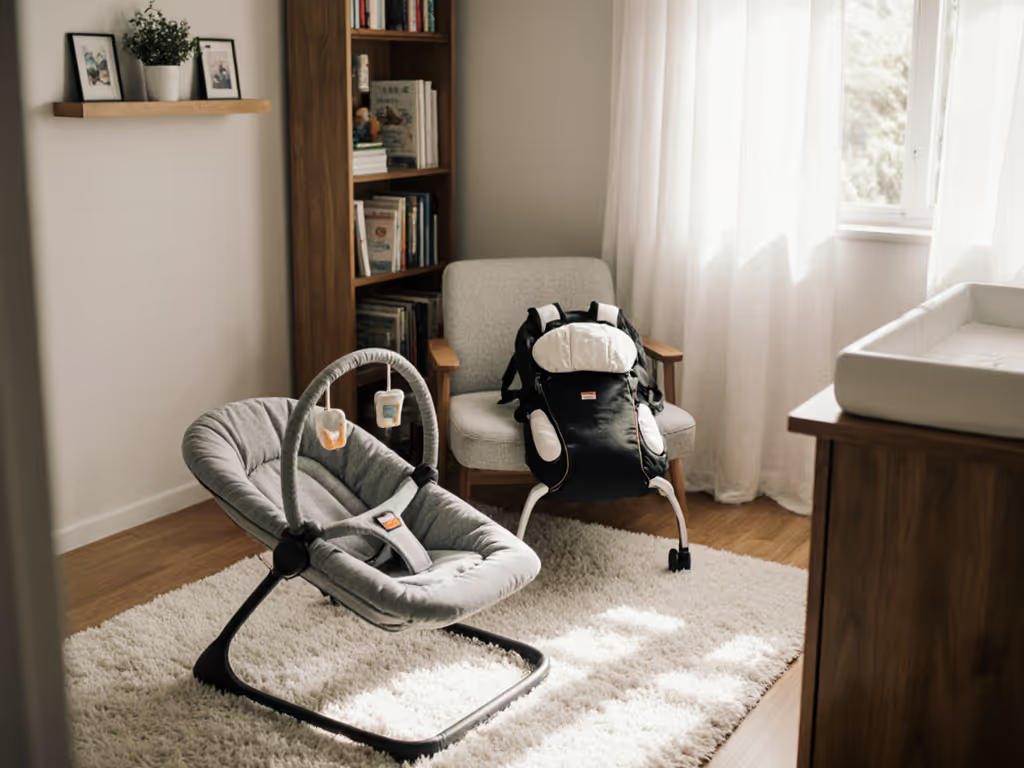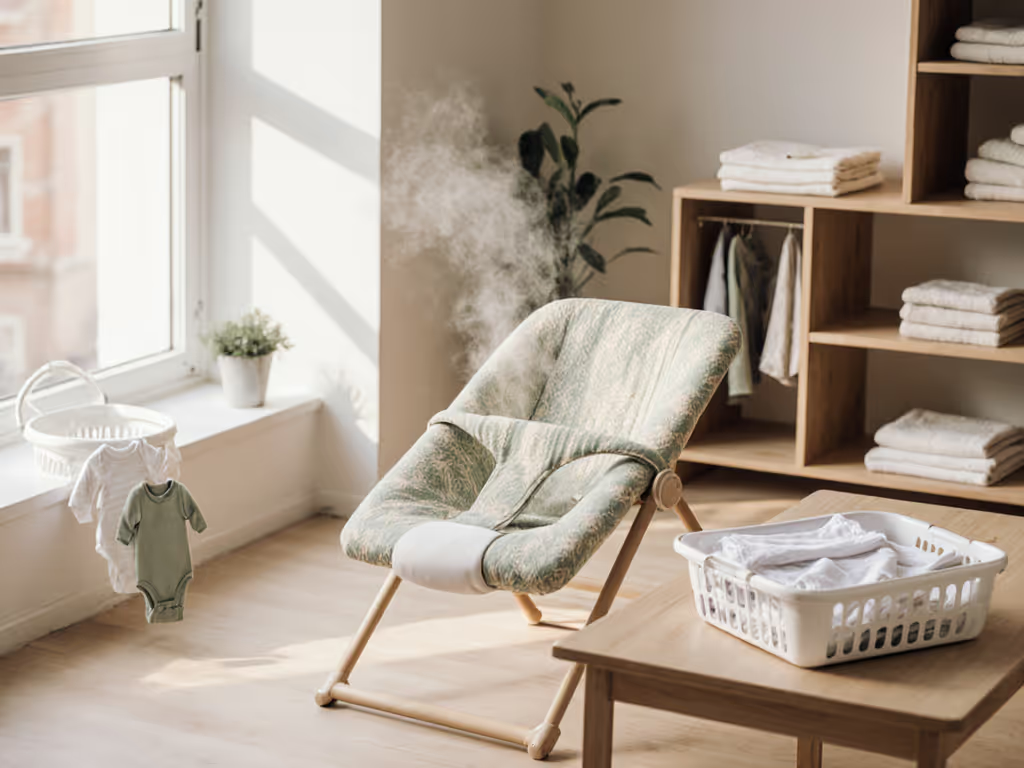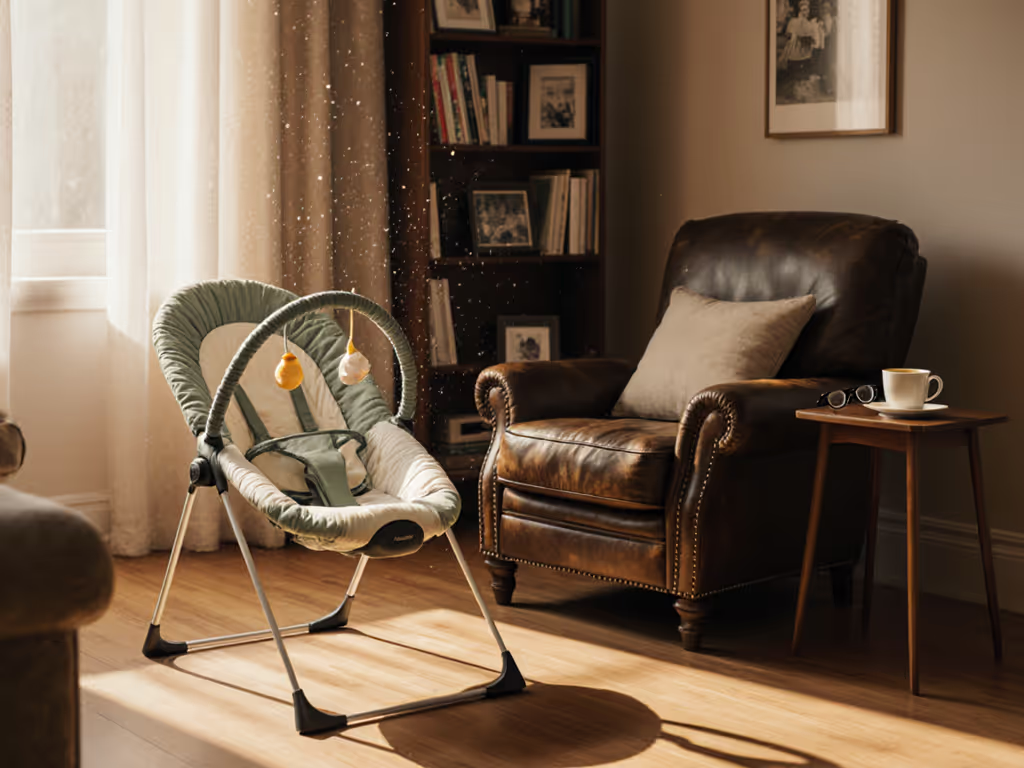
Baby Bouncer Materials: Wood vs Plastic Cleaning Guide
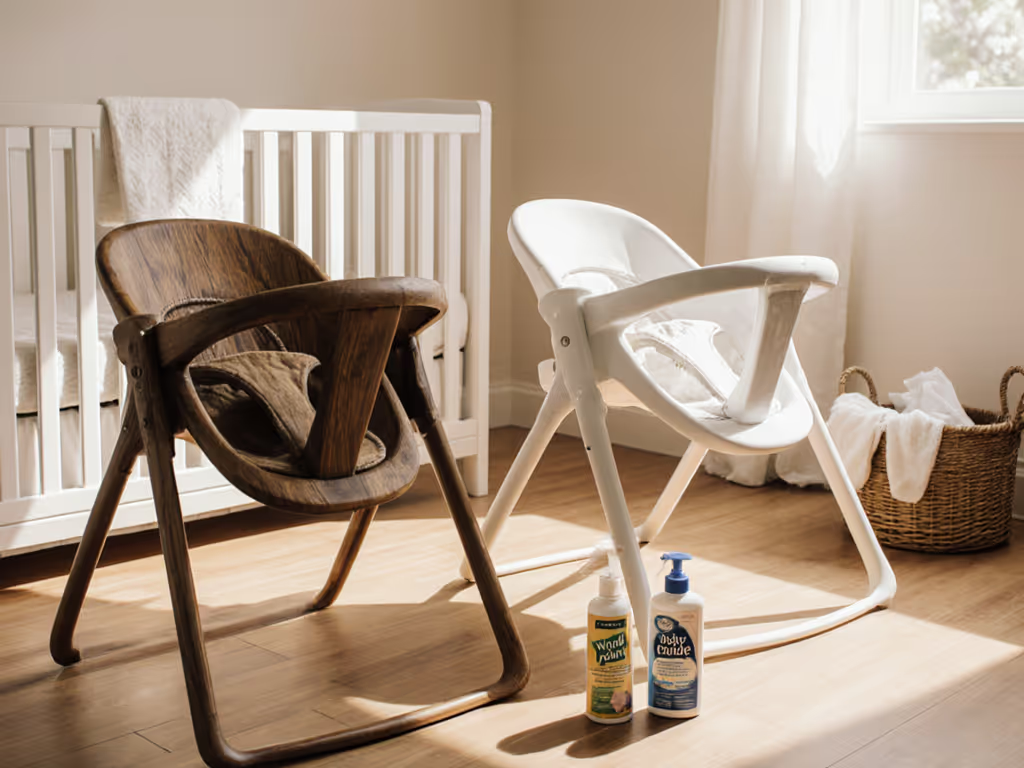
When you're navigating the maze of baby gear options for your compact living space, understanding baby bouncer materials becomes essential (not just for aesthetics, but for safety, maintenance, and daily practicality). As someone who's helped hundreds of space-conscious families navigate infant seating choices, I've seen how the right material decision can mean the difference between a trusted ally in your parenting routine and a source of constant stress. Let's explore the realities of wood versus plastic bouncers through the lens of what matters most to you: quick cleanups, safety assurance, and seamless integration into your minimalist home.
Why Material Matters Beyond Aesthetics
Choosing baby bouncer materials isn't just about matching your neutral nursery palette, it is a foundational safety consideration that impacts daily life more than most parents anticipate. When bent the right way, wood can offer remarkable flexibility while maintaining structural integrity, making it ideal for natural baby bouncers that withstand daily use without compromising safety. Plastic bouncers often deliver convenience features, but their material composition raises important questions about durability, chemical exposure, and cleaning efficiency.
Safety is a routine you practice, not a feature you buy. I recently spoke with a parent who confided they'd been letting their newborn nap in the bouncer during precious quiet moments, not realizing the risks of prolonged use on an inclined surface. Together, we timed a soothing routine and practiced moving to a flat, safe sleep surface immediately after, transforming a potentially dangerous habit into a safe, repeatable practice. For step-by-step technique and safe usage, see our proper bouncer positioning guide. This is why understanding materials matters: they shape your ability to maintain short, supervised stints without compromising safety.
The Hidden Impact of Material Choices
Baby bouncer materials directly affect not just your baby's safety, but your mental load (especially when dealing with frequent messes in tight living quarters).
Consider these research-backed realities:
- Indoor VOC levels can be 2-5x higher than outdoors according to EPA findings, making material composition crucial for infants who breathe more air relative to their size
- Pressed woods often contain formaldehyde (classified by the EPA as a known human carcinogen), while many plastics contain BPA, phthalates, or flame retardants that can outgas
- Natural wood finishes like beeswax or tung oil create safer surfaces than painted alternatives that may chip and expose babies to toxins
These are not just technical details. They are the difference between confidently leaving your baby in the bouncer while you take a quick shower versus constant anxiety about what is leaching into your baby's environment.
Wood Bouncers: The Sustainable Contender
Wooden bouncers have gained popularity among design-conscious parents seeking both aesthetic harmony and practical functionality in small spaces. When properly constructed, they offer distinct advantages for space-limited households where every square inch counts.
Safety and Stability Benefits
Quality wood bouncers typically feature a lower center of gravity than their plastic counterparts, reducing tipping risks (especially important in apartments with hard flooring where stability matters most). Look for bouncers made from solid, sustainably sourced hardwoods like beech rather than pressed woods that may contain formaldehyde-based glues.
Key features of safe wood bouncers:
- FSC-certified wood (ensuring sustainable forest management)
- Unpainted or naturally finished surfaces (beeswax, tung oil, or linseed oil)
- Solid wood construction (avoiding particleboard or MDF)
- Wide, stable base (at least 18 inches in diameter for optimal stability)
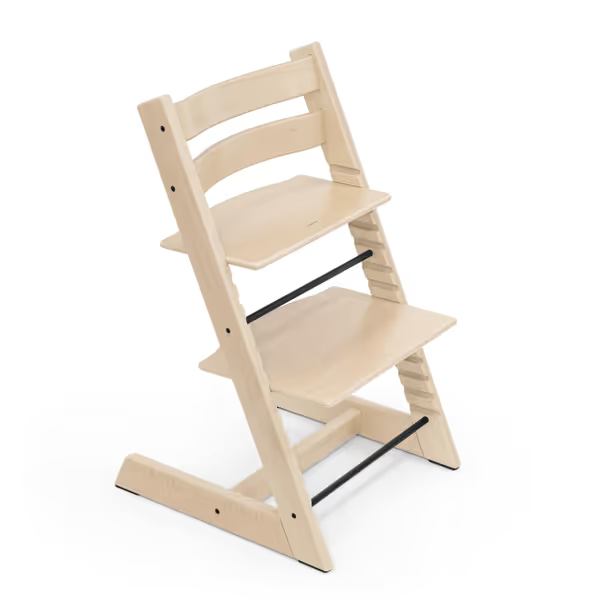
Tripp Trapp Chair
Cleaning Considerations for Wood Bouncers
When it comes to maintenance, wood bouncers require thoughtful care that differs significantly from plastic models. The good news? Their simplicity often makes cleaning more straightforward:
- Daily spot cleaning: Use a slightly damp microfiber cloth with water only (no chemicals)
- Stain treatment: For stubborn marks, mix 1 tsp white vinegar with 1 cup water; never soak wood surfaces
- Drying protocol: Immediately dry with a clean towel, wood should never remain damp
- Deep cleaning: Every 2-3 months, apply food-grade mineral oil to maintain finish
The minimal crevices in well-designed wooden bouncers mean fewer places for milk leaks, pet hair, or blowout messes to hide, translating to faster cleaning times that matter when you're exhausted and time-pressed.
Plastic Bouncers: Convenience with Compromises
Plastic bouncers dominate the market with their vibrant colors, motorized features, and often lower price points. But for parents living in small spaces who prioritize quiet functionality over flashy features, they present specific challenges worth considering.
The Plastic Reality Check
Many plastic bouncers on the market, especially budget-friendly options, are constructed with PVC and potentially toxic glues or dyes. The thin walls of many plastic frames can lead to squeaking, rattling, and instability (problems that become magnified in homes with hard flooring and thin walls where noise travels easily).
Cleaning Plastic Bouncers: What Manufacturers Don't Tell You
Plastic bouncers often promise "easy clean" surfaces, but the reality is more complex:
- Surface cleaning: Most plastic frames can be wiped with a mild soap solution, but avoid harsh chemicals that can degrade the material over time
- Fabric challenges: Removable covers often have complex attachment systems that frustrate tired parents
- Hidden hazards: Deep crevices around motor housings and electronic components trap odors and bacteria
- Stain retention: Plastic surfaces often develop permanent staining from food and bodily fluids
The "easy clean bouncer" promise often falls short when you're dealing with a sudden blowout at 2 AM and discover how many components need disassembly before proper cleaning can begin.
The Fabric Factor: What Really Touches Your Baby
While the frame material gets most attention, your baby's skin primarily contacts the seat fabric, making bouncer fabric types a critical consideration for sensitive skin and easy maintenance.
Natural Material Bouncer Options
For parents prioritizing both baby comfort and quick cleaning, natural fiber blends offer compelling advantages:
- Bamboo fabric: Naturally antimicrobial, wicks moisture, and machine washes beautifully
- Organic cotton: Hypoallergenic and breathable (look for GOTS-certified options)
- Hemp blends: Durable, gets softer with washing, and resists bacterial growth
The best natural material bouncer options feature fully removable, machine-washable covers with minimal snaps or complicated attachment systems, saving precious minutes during urgent cleanups.
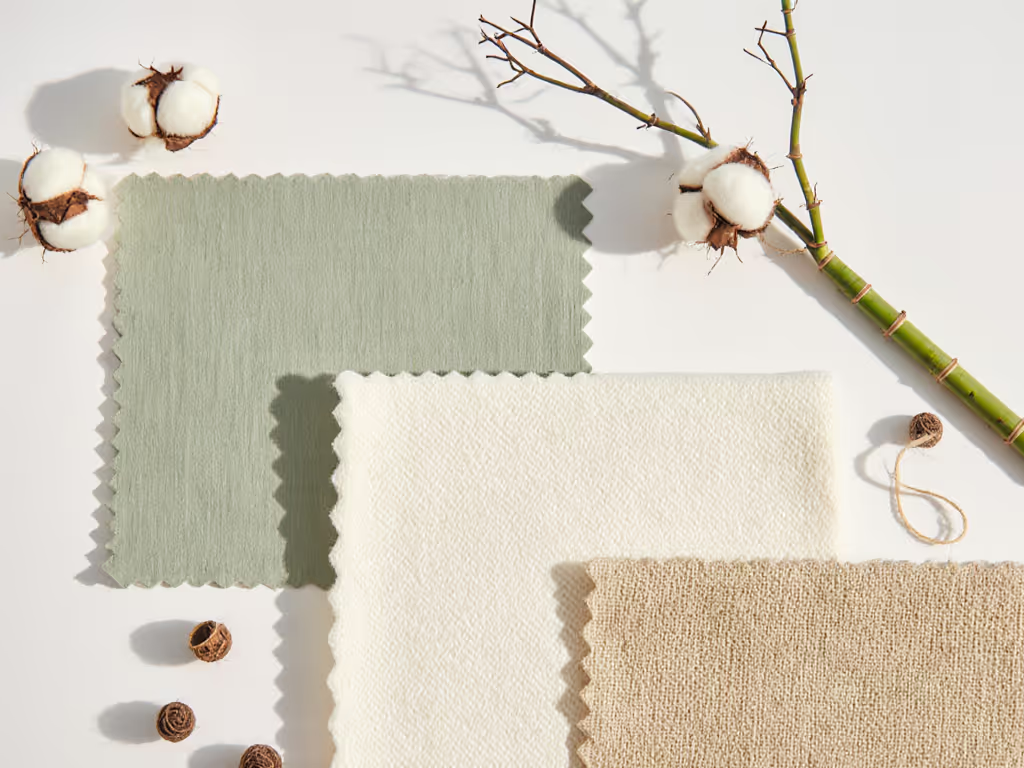
Synthetic Fabric Considerations
Many plastic bouncers use polyester blends that present specific challenges:
- Stain retention: Polyester often retains odors and stains more than natural fibers
- Heat retention: Can create uncomfortable "hot spots" for babies in warmer climates
- Cleaning complexity: Many require hand-washing or special detergent formulations
When evaluating bouncer fabric types, ask yourself: "Can I remove and wash this cover in under 3 minutes while my baby naps nearby?" If the answer isn't yes, reconsider whether it meets your real-world needs.
Your Cleaning Protocol: Wood vs. Plastic
Understanding the practical cleaning differences between materials can help you choose what fits your lifestyle, not what looks good in lifestyle photos.
Wood Bouncer Cleaning Timeline
| Task | Time Required | Frequency |
|---|---|---|
| Quick wipe-down | 30 seconds | After each use |
| Deep seat fabric wash | 2-3 minutes (removal) + machine cycle | Weekly |
| Frame maintenance | 5 minutes | Monthly |
| Base stability check | 15 seconds | Daily |
Wood bouncers typically win for minimal daily maintenance, with their simple designs allowing for quick wipe-downs between uses. The lack of electronic components means fewer nooks where messes accumulate.
Plastic Bouncer Cleaning Reality
| Task | Time Required | Frequency |
|---|---|---|
| Component disassembly | 2-4 minutes | Before cleaning |
| Frame wiping | 1-2 minutes | After each use |
| Deep seat fabric wash | 3-5 minutes (removal) + machine cycle | Weekly |
| Motor housing cleaning | 3-5 minutes | Monthly |
| Reassembly | 2-3 minutes | After cleaning |
The convenience of plastic bouncers often disappears when faced with the reality of regular cleaning. Those "easy clean" claims rarely account for the full disassembly required to properly address blowout messes.
Making Your Decision: A Practical Framework
When choosing between wood vs plastic bouncer options, consider these space-conscious decision factors:
For Apartment Dwellers
- Footprint: Wood bouncers often have more compact, stable bases that work better on hard flooring
- Noise profile: Wood frames typically produce quieter, more natural rocking without motorized components
- Visual integration: Natural wood tones blend better with adult furniture in shared living spaces
For Cleaning Efficiency
- Choose wood bouncers if: You prioritize minimal daily cleaning time and have limited storage for extra components
- Choose plastic bouncers if: You need specific features like vibration settings and can commit to more involved cleaning routines
Remember that regardless of material, no bouncer should ever serve as a sleep space. Always move your baby to a flat, firm surface for naps and overnight sleep.
Your Action Plan: Next Steps for Confident Choice
- Measure your space: Determine your exact footprint limitations before comparing models
- Test cleaning protocols: For any bouncer you consider, time how long it takes to remove and reinstall the cover
- Verify materials: Look for FSC-certified wood or BPA-free plastic with clear safety certifications
- Check secondhand viability: Determine which components wear out first (wood frames typically outlast plastic models)
Your ideal bouncer won't be the one with the most features, it will be the one that fits seamlessly into your routines, cleans up quickly, and gives you confidence during those precious short, supervised stints when you need to attend to other tasks. Safety lives in routines, not marketing claims or modes.
Before purchasing, ask yourself: "Will this actually get used daily, or will it become another piece of clutter in my already cramped space?" Choose materials that support your real life, not the idealized version sold in product photos.

